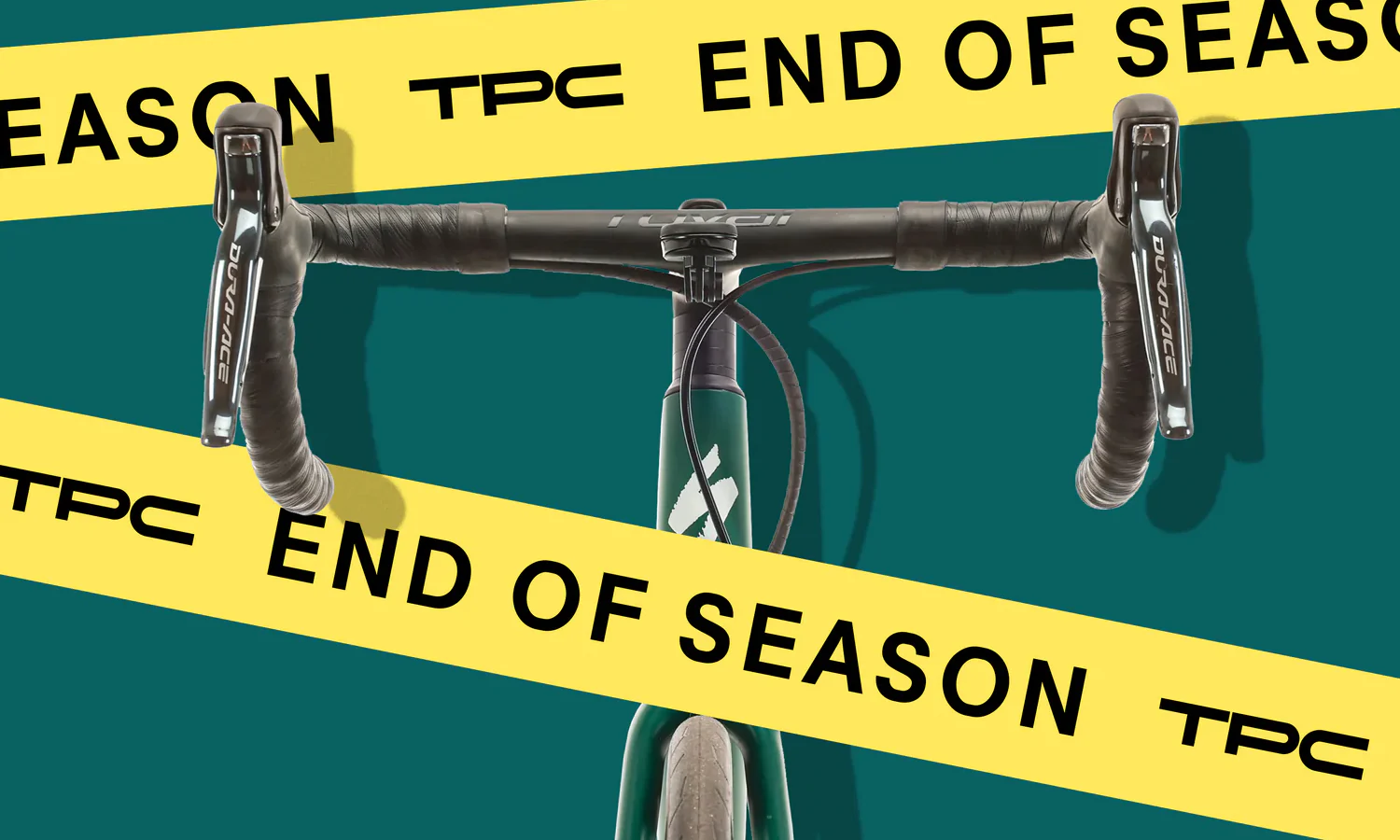As I was flying through the Arizona desert, avoiding saguaro and cholla cacti lining the trail, my mind wandered for just a moment. It had been about a decade since I last raced a 24-hour mountain bike race. A lot had changed since then.
Back then, my light was hopelessly crappy, and it died at some point on one of my night laps. Now, at 24 Hours in the Old Pueblo, one of the biggest 24-hour races in the country and the ultimate test for any bike light, I rode confidently through complete darkness, my path foward illuminated by a super-powered Light & Motion Seca.
 Mountain bikers race through the night during 24 Hours in the Old Pueblo. Photo: Brian Leddy
Mountain bikers race through the night during 24 Hours in the Old Pueblo. Photo: Brian Leddy
Bike lights aren't just for endurance racing though. They're handy for any cyclist who wants to keep riding outside when the days get shorter. With a good riding light, you can commute year-round. Dark after-work hours become a great time for mountain biking. Night riding can be a fun new adventure and it's a great way to fight off the winter solstice doldrums.
So to understand how to best illuminate the road/trail ahead, we decided to call Daniel Emerson, CEO of Light & Motion, to learn a little more about the technical aspects of riding lights.
Contents
What are lumens? How many do you need?
Does light shape matter?
Can you have a light that is too bright?
Will batteries die in the cold?
Handlebar mounted vs. helmet mounted bike lights
Getting started: The best bike lights
[button]Shop Bike Lights[/button]
What are lumens? How many lumens do you need and how bright should a bike light be?
 TPC employees using 500 lumen Niterider lights for a post-work ride.
TPC employees using 500 lumen Niterider lights for a post-work ride.
When you replace a lightbulb in your home, you refer to a bulb’s wattage. But most bike lights are measured in lumens, not watts. What gives?
Nearly all modern bike lights use LEDs. Those light-emitting diode bulbs are becoming increasingly efficient, meaning they use the same amount of wattage but produce more light. Wattage simply measures power to the bulb.
“Lumens were developed specifically for the human eye,” says Emerson. “We humans can only see certain wavelengths of light. Lumens are only wavelengths of light useful specifically for humans.”
Emerson recommends a minimum of a 1,000-lumens (this can be achieved with a single light or a pair of lights) for most mountain bike trail riding. This will provide enough light to easily see trail features and obstacles in total darkness.
You can get away with less though. I've done trail rides with a single, helmet mounted 500 and 750 lumen lights and felt fairly safe, though I couldn't go as fast. For commuting on the road, a 500 lumen light on the handlebars works very well.
Does bike light shape matter?
 Lael Wilcox lighting up Unbound Gravel XL. Photo: Rugile Kaladyte | The Radavist
Lael Wilcox lighting up Unbound Gravel XL. Photo: Rugile Kaladyte | The Radavist
Lumens are an easy apples-to-apples comparison. However, a light’s beam shape can also greatly impact how your eyes perceive what’s ahead — or in your periphery.
“As we start to bring in more light, we tend to spread it,” Emerson says. “With 1,000 lumens, you can see far ahead, but you won’t be able to see much to either side.
“Our of top-of-line Seca has four LEDs — one in the center is literally plowing light down the center, and the two to the side are angled off-center. Instead of round spot down the trail, you’re getting an oval shape. The bottom LED spreads light in a near field, illuminating the trail near to you to see where you want to steer like on a slow corner.”
Having ridden with my own Seca for a while, I can confirm that the beam shape does make a difference. With little head motion, it’s easier to glance ahead to the exit of a corner or to see a small rock move right in front of me.
Can you have a bike light that is too bright?
If money is no object, it’s easy to assume that more is always better in terms of lumens. However, Emerson cautions that too much light can lead to what he calls the “Snowball Effect.” Essentially, a too-bright light can interfere with your eye’s natural ability to compensate for low light, temporarily blinding you.
“If you project a really bright light down the trail, and your eye adjusts for that bright light, the minute you look aside you’re blind, it destroys your night vision,” he says. “With our beam, we have a very even fall-off. It is bright enough in the center to see well, but when you look to the side, your pupil hasn’t completely dilated. It’s a much more comfortable light to ride with, and you can see much more broadly.”
Light & Motion doesn’t go beyond 2,500 lumens for its bike lights. In part that’s because Emerson and his team feel the beam shape is more important. Also, he notes that lights with more lumens usually require heavier batteries.
“I like the Seca Race,” he says, which at 2,000 lumens is 500 lumens less than the brightest option, the Seca 2500. “While more lumens are nice, I like light weight and I can always add a second battery for back-up. The heads are the same weight, it is the battery that adds the heft.”
Will bike light batteries die in the cold?
Anyone who has had to jump-start their car in the dead of winter can confirm that cold temperatures are hard on batteries. If you night ride in places like Florida or Southern California, this might not matter, but in temperate regions, night rides can get kind of cold. The good news is, if you avoid storing your batteries in the cold, you should be okay.
“You start to affect battery performance below freezing, you affect the run time,” Emerson says. “You shouldn’t leave it outside, like in the car when you’re not using it. The colder it gets, you could get half the battery life. But when it’s in use, it’s warm, generating heat internally.”
Handlebar mounted vs. helmet mounted bike lights
 Photo: John Watson
Photo: John Watson
You generally have two options to mount bike lights: your handlebars or your helmet. There are tradeoffs and benefits to either placement, so it boils down to personal preference.
A helmet light illuminates exactly where you are looking. Compared to a bar mount, a helmet light doesn’t bounce around quite as much on rough trails. Mounting a light on your bars takes the weight off of your head, and avoids annoying wires that go down your back to an external battery (depending on your light). Bar-mounted lights are also perfect for pretending you’re racing the Baja 1000 … braap!
Serious night riders often pair a helmet and a bar light, and often one is more powerful than the other.
“[World champion] Rebecca Rusch likes the powerful light on the helmet and just a pointer light on the bar,” Emerson adds. “I prefer the big broad Seca on the bar because I don’t want to deal with wires coming down my back.”
Most lights can mount on either your handlebars or helmet, so you can try both options. Eventually, you might opt for a light on both helmet and bars, but for starters, just one will be fine. I prefer a helmet-mounted light because it casts light exactly where I want it. It’s also less bouncy than a bar-mount, but I do need to be careful not to snag it on low-hanging branches.
Getting started: The best bike lights
I realize I’m quite spoiled to have a 2,500-lumen Seca that makes me feel like I’m being chased by a trophy truck. If you’re only dabbling with night riding, it might not make sense to get a $400 race light. Fortunately, there are plenty of more affordable options.
At TPC we like lights from Light & Motion, NiteRider, and Lezyne, and there are lots of ways to to get to the 1,000-lumen starting point Emerson recommended and beyond. If you're on a budget or just starting out, try some more affordable sub-1000 lumen lights. As you gain experience, you can start upgrading, and your old light can become a second handlebar or helmet light to augment your upgraded light.
 My Light & Motion Seca Enduro headlight.
My Light & Motion Seca Enduro headlight.
Best 2000+ lumen bike lights
[product-block handle="light-and-motion-seca-2500-enduro"/]
[product-block handle="niterider-pro-2200-race-headlight"/]
[product-block handle="niterider-lumina-max-2500-headlight-with-nitelink™"/]
Best 1,500-2,000 lumen bike lights
[product-block handle="light-motion-seca-comp-2000-headlight"/]
[product-block handle="lezyne-mega-drive-1800i-headlight"/]
[product-block handle="niterider-lumina-max-1500-with-nitelink™"/]
Best 1,000-1,500 lumen bike lights
[product-block handle="niterider-lumina-pro-1300-headlight-with-nitelink"/]
[product-block handle="niterider-lumina-pro-1000-headlight"/]
[product-block handle="light-and-motion-vis-1000-trooper-headlight"/]
Best 700-1,000 lumen bike lights
[product-block handle="lezyne-lite-drive-1000xl-matte-black"/]
[product-block handle="niterider-lumina-micro-900-headlight-1"/]
[product-block handle="light-and-motion-vis-700-tundra-headlight"/]
Best 500-700 lumen bike lights
[product-block handle="niterider-lumina-micro-650-headlight-1"/]
[product-block handle="light-and-motion-vis-500-onyx-headlight"/]
[product-block handle="lezyne-hecto-drive-500xl-blk-hi-gloss"/]
Whatever light you end up with, make sure you also find a good crew of friends to ride with. Night rides are always more fun (and a little safer) with fellow riders who match your ability level and sense of adventure. Who knows, maybe they’ll talk you into a 24-hour race someday.
[button]Shop All bike Lights[/button]












